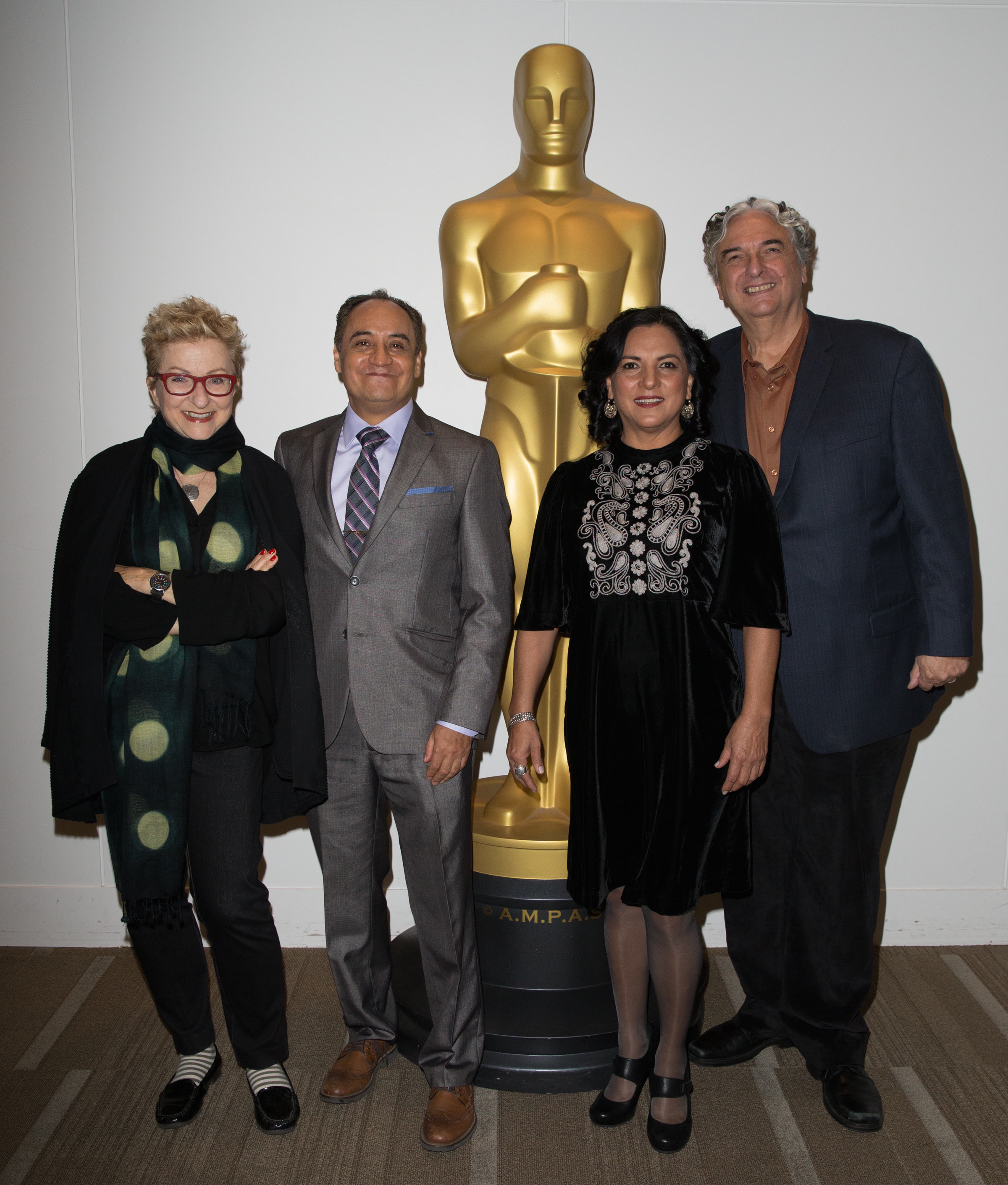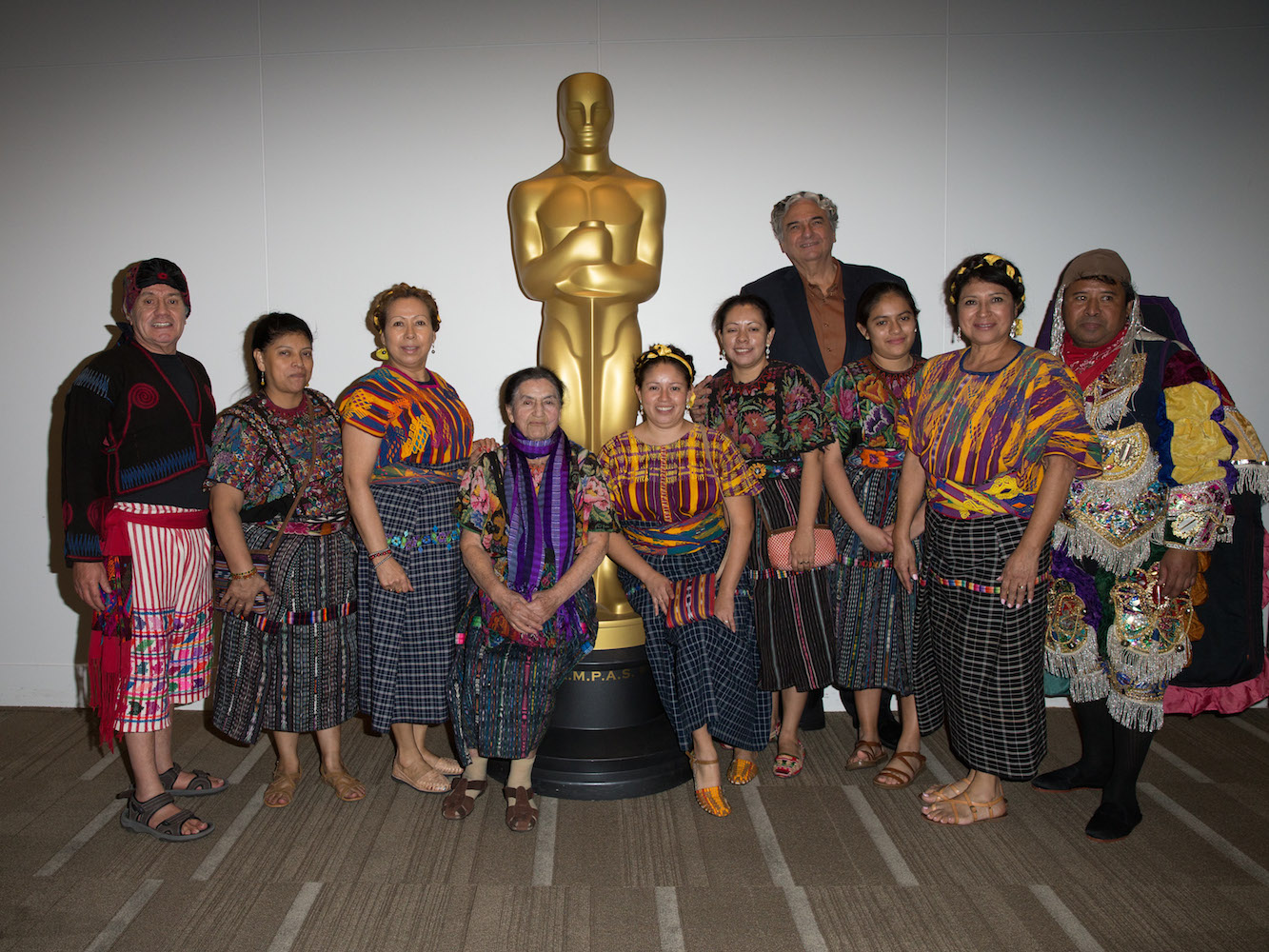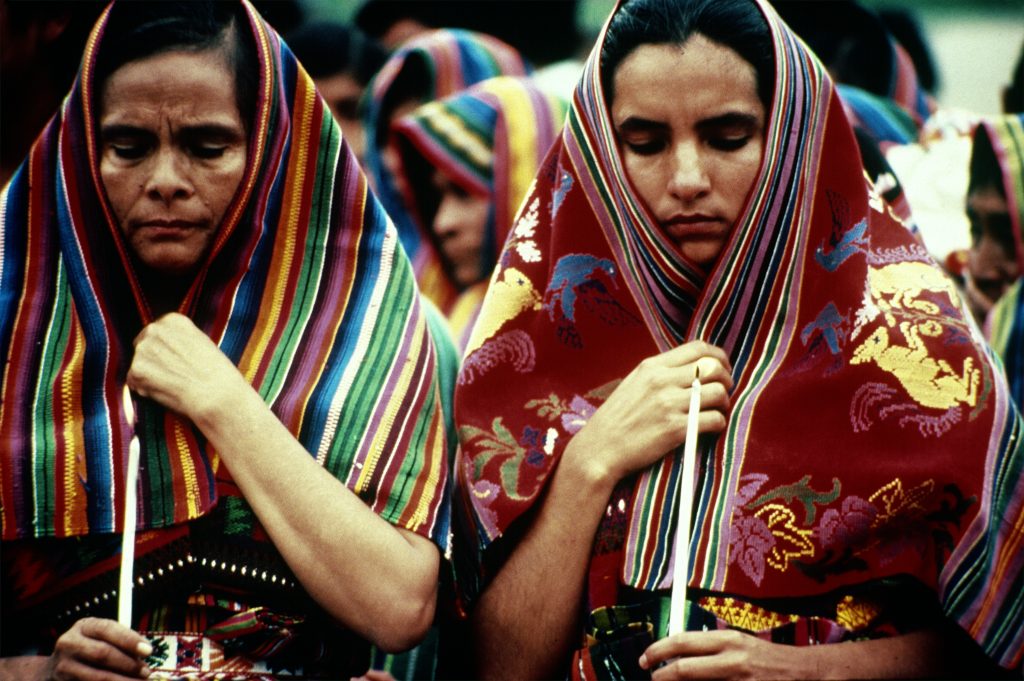Earlier this year, Mexican-American director Gregory Nava celebrated the twentieth anniversary of Latino staple, Selena, which immortalized the Como la flor singer and earned J. Lo a Golden Globe nomination. But before that major project, Nava had already made a name for himself in Hollywood with his Oscar-nominated, Spanish-language immigrant story, El Norte. Strikingly elegant in its visuals and mystical undertones, the 1983 movie resembles a lavish David Lean epic but telling a then-untold narrative about a pair siblings from Guatemala. It manages to humanize their struggle while criticizing the US’s hypocritical stance on immigration. El Norte played in US theaters for over a year and is considered the first truly independent film to be nominated for an Academy Award in the screenwriting category.
Closing out the screening series, From Latin America to Hollywood, a delicately restored print of Nava’s El Norte was recently screened at the Academy with the team behind the film and cast in attendance. A beautiful and spiritually driven performance by LA-based Grupo Folklórico Mi Bella Guatemala preceded the feature. Women in traditional dresses showcased ancient dances for an once-in-a-lifetime occasion at AMPAS’ Beverly Hills theatre.
The post-screening conversation unearthed insane behind-the-scenes stories which might necessitate a documentary on the making of El Norte when considering the score of incidents everyone involved had to brave in order to see it come to fruition. Co-writer Anna Thomas had to pack undeveloped film in her suitcases and smuggle it out Mexico when the authorities were trying to prevent them from filming because of the unstable political situation of the region. Bertha Navarro, who is also Guillermo del Toro’s longtime producer, was kidnapped and then liberated during the production. Cinematographer Jim Glennon had to shoot B-roll and scenes in Tijuana with a hidden camera inside a van, and later planned an escape out of the country as men with guns raided one of the sets in central Mexico.
Leads Zaide Silvia Gutiérrez and David Villalpando were confronted by an angry mob in Chiapas after filming a sequence in a sacred place. Nava forgot the storyboards for the entire film in that same church and had to brave the crowd and pull strings to get them back before being kicked out of town. He then would have to meet criminals in the outskirts of Mexico City to exchange money for a can of film that had been stolen from them. Eventually, certain spaces and sets had to be recreated in the US in order for the movie to be completed. Here are some highlights from the compelling panel.
Gregory Nava on the Surprise Oscar Nomination for Best Original Screenplay
It’s a pretty historic script, in the sense that it was nominated for an Academy Award, and this was the first independent film that got an Academy Award nomination, and it was pretty shocking when it happened to us, because we weren’t even expecting that. It was incredible, because there was no Oscar campaign for El Norte. It had been released in New York in January, and in Los Angeles in March, and nada, there were no screeners, nothing, no campaign at all. The Writers Branch nominated it purely because they had seen it, and they thought it was excellent, and that it deserved a nomination. That’s really the way things should be. It played at the Music Hall theatre down the street. It played in that theatre for a year, and there were lines around the block to see the film. They nominated it, and it was an overwhelming experience when we got that Academy nomination, I can tell you.
David Villalpando on the Dangers of Shooting a Church Scene in Aguacatenango
We were almost killed in Aguacatenango, Chiapas. It was a very dangerous place. Gregory Nava wanted to film inside the church in Aguacatenango. It’s the scene where Zaide lights the candles inside the church, and Gregory chose that location. It’s a wonderful place, but the indigenous people were a little drunk because it was dos de noviembre, the Day of the Dead, and they were a little drunk, and asking, “What are they doing here? Why don’t they take off their hats when they enter the church? Why do they have those things?” They were talking about the dolly. All of the people crowded around us, and suddenly, we were in the middle of 2,000 people. The whole town was in the plaza. I was wearing my costume, and Zaide was wearing her costume, but our costumes were very different from those of the etnia of Aguacatenango. They started to watch us with amazement, “What are you doing here?” They were talking in their indigenous language, so I approached them and said, “Hello.” And somebody told me, “What are you talking about? Are you laughing at my tongue?” I said, “No, no no, we are shooting a picture?” And he asked me, “What do you mean, a picture?” There was nothing like that in that town. Suddenly, they wanted to kill us, because we were shooting inside the church. The most sacred place in the town was the church.
Gregory Nava on a Real Incident Inspiring the Washing Machine Scene
We were working with the Kanjobal community of Mayan refugees, and they were mainly at that time, as you see in the film, working in downtown Los Angeles in sweat shops, and Luis Marroquín, who was one of the men we were working with, said, “We’re helping you, why don’t you help us? Our young women, they don’t like working in the sweat shops, so we hear that people get work taking care of babies and taking care of the home in rich Gringo houses. Can you get some of our women jobs? Do you know anybody?” So we found our next-door neighbor, astronomy professor, who needed a full time child-care nanny, so we actually said, “Yes, we found somebody.” The young lady who did this was named Rosa, which is ironic. She had only been in the United States for two weeks, so we took her and Luis to meet these people, and they hired her. Then I was on the phone a lot, translating, and one day this thing happened with the washing machine, and this is an example of how the research for the film started to write the script. They called, and I couldn’t understand what was going on with this washing machine, so I said, “Anna, we’ve got to go up to the house to see it in person.” So we go up, and there’s Rosa, and there’s the lady of the house, and here’s me and Anna, and here’s those machines, and she starts explaining it. I’m sitting there, and Rosa says the same line in the movie, “This is very difficult,” and we’re like, “You’re right it is! Let’s go home and write this script! The scene is exactly what the lady said when she was trying to explain the machines.

Gregory Nava on Sears Refusing to Lend Them Washing Machines for the Film
When we went out to shoot the scene, we thought, “Ok, people are loaning us stuff and helping us with things, and the washing machines are from Sears,” and Sears went, “Sure, we’ll help you, let’s see the scene.” So we sent the script to Sears, and we got a message back saying, “No, you can’t have these machines for your movie,” because they didn’t want their washing machine and dryer to be the washing machine and dryer that your nanny and your housekeeper can’t operate. They wouldn’t let us use them, so we went back to the lady, and we said, “You really like Rosa, don’t you?” She said, “Oh she’s great, she’s wonderful, she’s just fantastic.” So we said, “We need a favor. Can we borrow your washing machines?” The grips went down there and they brought the washing machines to our set, so the washing machines in the movie are the exact same ones.
Gregory Nava on Armed Men Shutting Down Production in Mexico
That huge hacienda down in Morelos, where we were shooting the scene with the men being killed by the army, that was the day that the men came to shut the movie down because it was politically too heavy an image. There were wars in Guatemala and El Salvador, and the Mexican economy had collapsed, and they were very tenuous that Mexico would go into a war situation itself. So, this was an image they did not want, and they shut the movie down. But Bertha Navarro and Anna were out there, and Jim Glennon and I were in the depths of this thing, shooting these guys running around, when we get this message saying, “This is it. You have to leave. This is it. These guys are here with guns.” Jim Glennon was supposed to leave that day, because I believe his daughter Allison was being born, so he was actually slated to leave that day. I said to Jim, “Look, you go out the back of the hacienda and go to the hotel, get the negative that we haven’t sent to New York to be developed, take that negative in your suitcase, fly it to LA, and we’ll deal with this, but I want to get that negative out.”
Gregory Nava on Steven Spielberg Being Impressed By One Particular Scene
It turns out that rats are very finicky, very particular, and very hard. As a matter of fact, after this movie was released, I got a phone call from Steven Spielberg. He said, “I loved the movie,” and that’s when I met him. I went to his place, and we watched the movie together. But after saying, “It’s wonderful, I really loved it,” he asked, “How did you do the rat scene?” That was his first question, how, because he had tried to work with rats before, and rats, they don’t perform.
Gregory Nava on the Difficulty of Getting Rodents to Act
Rats just come to the set and start preening themselves and they look cute. I talked to Ron Oxley, and I said, “I want them to run and attack, so how do you do get them to do that?” He said, “The only way to do it is to have them on the set, you have to have a dummy camera, doubles dressed like Zaide and David, everything has to be exactly the way it will be when you shoot, because if there’s any change, they will just stop and they won’t do anything.” They’re very particular. When we were in Mexico, David Wasco and Ron were building the set, and setting it all up, and training the rats. We had two people in there who had the same costumes as Zaide and David would have, we had a phony camera, and we put peanut butter on their necks so that the rats, when they ran down, would know that’s where the food was. Then, when Zaide and David came, we were going to use the doubles, but they did the scene entirely. We used no doubles for the scene, and I think that’s the reason the scene is so powerful, because you see it’s them in there. You know it’s them.

Zaide Silvia Gutiérrez on Shooting the Rat Scene in Silence
I would like to say that, in the tunnel with 200 rats, I didn’t want to get in, because I’m rat-phobic, but my Producer and Director convinced me to go in. But I remember that we couldn’t scream or make any sound, because the rats were scared of us, so we had to shoot silent, just miming our faces for the screaming, and then we made the sound at a different time. I was in there until a rat jumped on my face, and I can still remember the cold tail. I remember all of this as I was watching the scene now, and it really seems that we were yelling and screaming at the time, but we did it at a different time, so that’s another part of the magic of the movie world.
Gregory on Why the Film Resonated With Audiences and Critics
I was reading an essay recently where they were talking about these various films that came before El Norte, like Salt of the Earth and Border Incident, and none of them had any impact, and suddenly this film was a tremendous hit and had lines around the block. As I said, it played for a year. This essay was speculating on what did El Norte have that other films about this subject didn’t? There are a couple of things. One is, of course, that is an epic journey; you see their life, where they come from, which hadn’t been done before. Here you see their life in Guatemala, and the whole world that they come out of before they make their journey, and I think that really resonated with people. The other thing that I think really resonated with people is that – this was really important to us when we made the film – we put Rosa and Enrique in the middle of their story. Before, it was always the border guy, or the lawyer, or some white person had to be in there somewhere as being important, a white savior figure. We said, “We’re not going to have a white savior figure in this film, at all.” This is Rosa and Enrique’s story, and it should be about them, and even though that made it harder to get made, that’s the real story of the film- their story. Finally, these two young actors, Zaide and David, were so sympathetic. People loved them.







